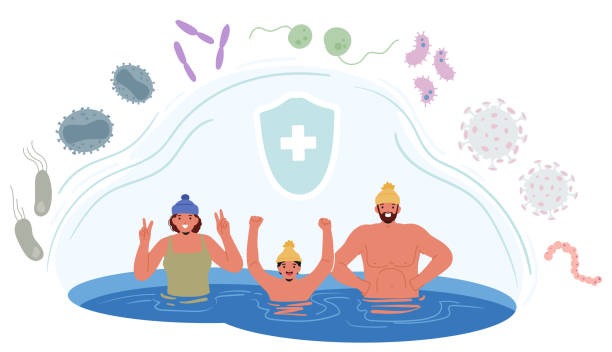Adventure therapy benefits are reshaping the way we approach teen mental health and personal growth. By combining outdoor challenges with therapeutic support, this innovative approach helps teens build resilience, improve communication, and rediscover confidence. Unlike traditional therapies, which are done in-clinic settings, adventure therapies are often practiced outside in the natural environment, which serves as a safe space for self-exploration and healing.
Contents
- 1 Definition Of Adventure Therapy
- 2 The Reason Adventure Therapy is Effective
- 3 Mental Health Benefits of Adventure Therapy for Teens
- 4 Who is Adventure Therapy Good For?
- 5 In What Ways is Adventure Therapy Different from Other Forms of Therapy?
- 6 A Regular Session Of Adventure Therapy
- 7 The Long-Lasting Effects of Adventure Therapy
- 8 Is Adventure Therapy Suitable For Your Teen?
- 9 Summary of Benefits
Definition Of Adventure Therapy
Adventure therapy combines the courtesy of nature and defined activities with psychological evaluation. A therapist directs teens to engage in hiking, rock climbing, kayaking, or team-building exercises while accompanied by skilled mental health professionals. These activities set the stage for adolescents to be challenged, problem-solve, and learn how to cope.
It also provides more than therapy talk. The approach incorporates physical activity, adrenaline, and team spirit into the healing process to further emotional development. They learn how to trust themselves, others, and different aspects of themselves.
The Reason Adventure Therapy is Effective
Adventure therapy helps significantly due to the fact that it makes teens let go of their comfort zones. Routine activities are often suffocating for those dealing with trauma, anxiety, behavioural challenges, or depression. A change of environment might just be exactly what they need in order to think outside the box.
This is what makes it so effective:
- Active Problem Solving: Instead of conceptualizing challenges, adolescents process them step by step.
- Nature: The outdoors has numerous benefits for relieving stress and enhancing mood.
- Instant Results: Climbs and trail navigation present unique challenges that reinforce confidence and resilience.
- Improved Trust: Relationships based on group skills are founded on trust and effective communication.
Mental Health Benefits of Adventure Therapy for Teens
Not only is adventure therapy entertaining, but it also offers undeniable advancements in mental health. Here are some fluctuations that teens commonly experience:
1. Increases Self-Esteem and Confidence
Teens feel empowered after meeting specific physical objectives, such as finishing a day’s hike or conquering a rock climbing route. As goals are achieved, the confidence they gain becomes a core component of the development that can be harnessed moving forward.
2. Lowers Anxiety and Depression
Simply being in nature has a calming effect, which also combats anxiety and depression. Engaging in physical activity releases endorphins, also known as the body’s natural mood enhancers.
3. Enhances Social Skills
Team building activities call for effective communication, consolidated with collaboration and clever thinking. Adolescents are taught how to listen, articulate and establish invaluable relationships.
4. Positive Coping Skills
It assists teenagers in recognizing tension hotspots and learning to manage strong emotions healthily through positive coping mechanisms.
5. Improves Emotional Control
Safely managing difficulties helps teens cope with fear, frustration, and excitement.
Who is Adventure Therapy Good For?
Adventure therapy is particularly beneficial for teens struggling with:
- Anxiety and depression
- Behavioral challenges
- Low self-esteem
- Trauma or PTSD
- Challenges with substance use
- Difficulty relating socially
This therapy is also helpful for teens who feel unmotivated or disengaged. This active method reawakens curiosity and meaning, enabling a refreshed engagement with life.
In What Ways is Adventure Therapy Different from Other Forms of Therapy?
A lot of young people find the office-centred and verbal focus of talk therapy off-putting or inaccessible. While effective for many, it can be intimidating or unrelatable for some teens.
Adventure therapy:
- Implements change through movement or actions.
- Relieves pressure that comes from sitting and face-to-face interaction.
- Stimulates dialogue in a relaxed outdoor environment.
- Offers hands-on lessons that will be remembered after.
A Regular Session Of Adventure Therapy
A session might involve hiking through beautiful trails, mixed in with group trust-building activities, and personal challenges such as rock climbing. A therapist who is licensed facilitates conversations and reflections and helps the teens connect the activities to their lives throughout the experience.
As an example, a challenging climb may lead to discussions about overcoming fear, setting goals, and celebrating milestones.
The Long-Lasting Effects of Adventure Therapy
The skills that teens learn during adventure therapy extend beyond the experience. They build resilience, which helps them manage stress, enhances self-image, improves problem-solving skills, and increases self-esteem. With time, families notice improvements in behaviour, attitude, and emotional stability.
Is Adventure Therapy Suitable For Your Teen?
If your teen is resistant to going to therapy or prefers engaging, active settings, then adventure therapy is an ideal option. This approach combines the benefits of nature with professional support, which helps promote lasting transformation.
Summary of Benefits
Adventure therapy benefits extend well beyond the wilderness. By encouraging teens to face challenges head-on, build meaningful connections, and discover their own strengths, it paves the way for lasting personal growth. Programs like those offered by Hillside Horizon help teens gain confidence, resilience, and a renewed sense of hope.

